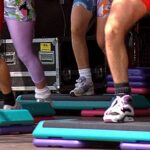A weight loss plateau is your body conspiring against you despite your best efforts. Here’s why it happens, when it happens and how to break through it.

Congratulations on hitting your weight loss plateau!
Congratulations on hitting your weight loss plateau! Hitting a weight loss plateau typically signals you’re following a successful weight loss plan, so give yourself a big hug and don’t get discouraged. This frustrating pause in your weight loss journey is quite common. It’s time for you, and perhaps your health care professional, to decide if your body is saying you’ve lost enough weight or signaling you to make changes to your diet and exercise routine so you can lose more.
Accurately Predict Your Weight Loss Plateau
When are you most likely to hit your weight loss plateau? The answer may depend on the percentage of body weight you lose. In a study from Laval University (LU), published in the journal Depression and Anxiety, participants typically hit their weight loss plateau after losing 11 percent of their initial body weight, and it took between 5.5 and 9.3 months to achieve that weight loss.
Why Did I Hit a Weight Loss Plateau?
Do you feel like your body is working against you even though you’re sticking to your diet? You might be right.
The same LU study found losing that 11 percent triggers a three, seemingly conspiratorial, reactions that make losing weight more difficult (be prepared to have an “Ah-ha! moment”)
When you lose enough weight to hit the plateau you experience
- “A significant decrease in resting metabolic rate,” which means your body now burns fewer calories when you’re resting (btw now that you’ve lost weight, you also burn fewer calories while exercising, too).
- A significant increase in appetite, making it more difficult to stick to your healthy eating plan.
- Weight-loss induced chemical changes in your body; these “changes are shown to be highly linked with the increase in depression.
Conquer Your Weight Loss Plateau with Exercise
If exercise played a part in your successful weight loss plan, we can assume you’ve improved your overall level of fitness and are ready to advance your workout. Make some changes your exercise routine that reflect the stronger, fitter, and more flexible you.
Cross-training is a simple way to vary your workout. Consider trying one of the following activities or let them inspire you to choose your own:
- Swimming (maybe at the JYC or YMCA)
- Take up a new sport (Racquetball burns mad calories!)
- Try new cardio machines
You can also up the intensity of your workout by increasing
- Duration. Increase your work-out time.
- Resistance. Turn up the dial/incline and use more effort.
- Pace. Set a faster pace on the treadmill and stair master, and set your “number-of-steps” goals higher.
Watch What You Eat
To successfully overcome your weight loss plateau, keep a tighter control over what you eat, when you eat it, and how much you eat by writing in a food journal, which has been clinically shown to promote weight loss.
Consider giving up artificially sweetened diet beverages because there’s a link between drinking diet soda and weight gain (omg-ess!). The Bay Area Hospital suggests cutting your calories by 200 per day to get through your weight loss plateau–as long as you don’t dip below 1,200 calories per day.
References for Weight Loss Plateau Help
1. Bay Area Hospital: Getting Past a Weight-Loss Plateau
2. Chaput, J., Arguin, H., Gagnon, C., & Tremblay, A. (2008). Increase In Depression Symptoms With Weight Loss: Association With Glucose Homeostasis And Thyroid Function. Applied Physiology, Nutrition, and Metabolism, 33(1), 86-92.
3. Green, E., & Murphy, C. (2012). Altered Processing of Sweet Taste in the Brain of Diet Soda Drinkers. Physiology and Behavior, 107(4), 560-567.
4. U.S. Department of Veterans Affairs: Handling Weight Plateaus
Image by Lusi









